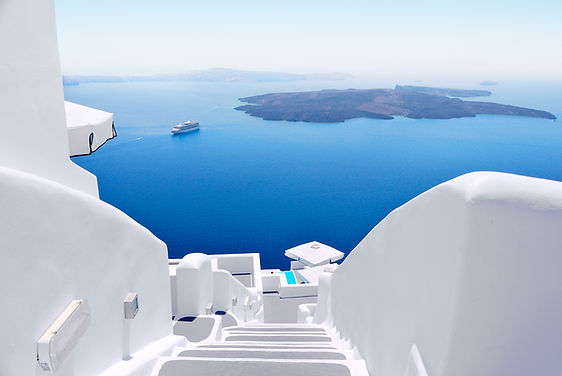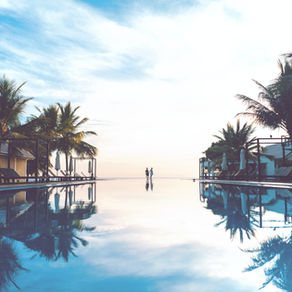WORDSMYTH CREATIVE CONTENT MARKETING LLC
Travel Industry Marketing Basics
Digital is the Future
60% of bookings happen online. That means you need to be there when customers are planning their trips. Appearing on page 10 of Google won't cut it. An outdated social media feed will drive away potential travelers.
Imagery is Critical
From the photos on your website to the ones you post on social media, the images you share have to be on point. You can easily undo the impact of great SEO strategies with bad pictures. Fortunately, the barrier of entry to great photography and video is not very high, and we can help you decide what will sell.
Catch Travelers During The Planning Stages
It isn't enough to show up in search just for your specific service and location (like "hotels in Maui"). You need to grab travelers' attention when they're first thinking about a vacation and searching things like "most relaxing tropical resorts." This requires a more nuanced SEO approach.
Curate an Experience
Use your content to show travelers what experience they will have when they choose to include you in their vacation or business trip. After all, what you are really selling is a feeling, freedom from the everyday, and ultimately, a fond memory.
Download Our
Travel and Tourism
Press Kit


Winning at Travel and Tourism Marketing
Compared to the past, booking travel today is light years ahead, with countless choices and instantaneous confirmations once you hammer out the details. Travel + Leisure explains that the first commercial system to process bookings electronically, “Reservisor,” was used by local travel agents in the 1990s but is now obsolete.
Digitawise adds that more than 60% of consumers research travel plans and trips online before deciding where to go, and over 70% of business travelers use smartphones to book their travel. Travelers still use agencies, but it is essential to have a robust online presence in the travel and tourism industry; otherwise, potential consumers will not find you as easily.
How Travelers Plan Trips
According to marketing strategist Violeta Ratiu, modern travelers are exposed to unlimited travel information on different channels and are happy to devote plenty of time researching trips before booking them. An Expedia study suggests that one traveler might browse as many as 38 websites before making their decision, and it usually starts with a broad search like a country’s name followed by the word tourism or travel.
Travel and tourism consumers have to go through specific steps when booking trips, and the journey consists of many different digital touchpoints along the way. Stackla explains that these interactions include everything that happens between customers and a brand in the world of digital media, like locating the website, comparing options, checking social media, and making the final purchase. You should optimize each touchpoint to influence their perception of your brand and create positive experiences.
Every traveler takes trips in their own ways, with some contacting local travel agencies to handle everything and others sweating out every last detail on their own. The first group may use search engines to find agencies or ask for referrals from friends. Do-it-yourselfers search and compare airline ticket prices, accommodations, car providers, Google Maps, credit card rewards, tour companies, and social media. As you can imagine, the competition in this industry is fierce.
Travel and Tourism Content Strategies
Adobe Experience Cloud gives even more statistics about how people plan their travels: the average consumer spends 53 days and 76 online sessions on 28 websites. More than 50% of them look at social media for travel tips. This trend of consuming travel content is expected to increase in the coming years; it is estimated to rise 60% in the U.S., 70% in Canada, and 75% in the U.K.

Potential customers enter questions like “best places to stay in Costa Rica 2022” and “cheapest hotel in Maui,” so it is in your best interest to invest in effective search engine optimization (SEO) and content strategies. SEO will help your travel and tourism business rank high on search engines, meaning more click-through rates (CTR) and purchases. Longer content is the right strategy for 2022; the average first page Google results has 1,890 words.
People researching travel tend to stay more engaged with content when researching and spend time reading extensive blogs and top ten lists, watching videos, and reading reviews from other travelers. The best travel content writers are passionate about traveling, and it shows in their highly-researched and detailed work. Consumers like to read first-hand experiences about where others have been and want to see many high-quality photos and videos.
Headlines and hooks are especially effective when trying to grab their attention. Travelseo.net emphasizes the importance of making your travel content shareable. A Facebook post about a fantastic ski resort in Aspen with pictures and headlines is one example of this.
Create a Sales Funnel
You should design your travel and tourism marketing strategy to get your company found on the internet by consumers. This is the first step in converting potential customers into purchasers. Once they're on your site or social channels, it should be easy for them to find detailed, valued information about your products and services to keep them engaged.
They should be encouraged to make buying decisions and feel confident that they can trust your brand. Here's where video, photos, and testimonials really count, too.

Still have questions? Contact Wordsmyth Creative Content Writing to see how we can help your company thrive in today’s digital travel and tourism industry. We are experts in storytelling and the technical background requirements to ensure the glorious possibilities of your travel experience reach the right audience.













































































